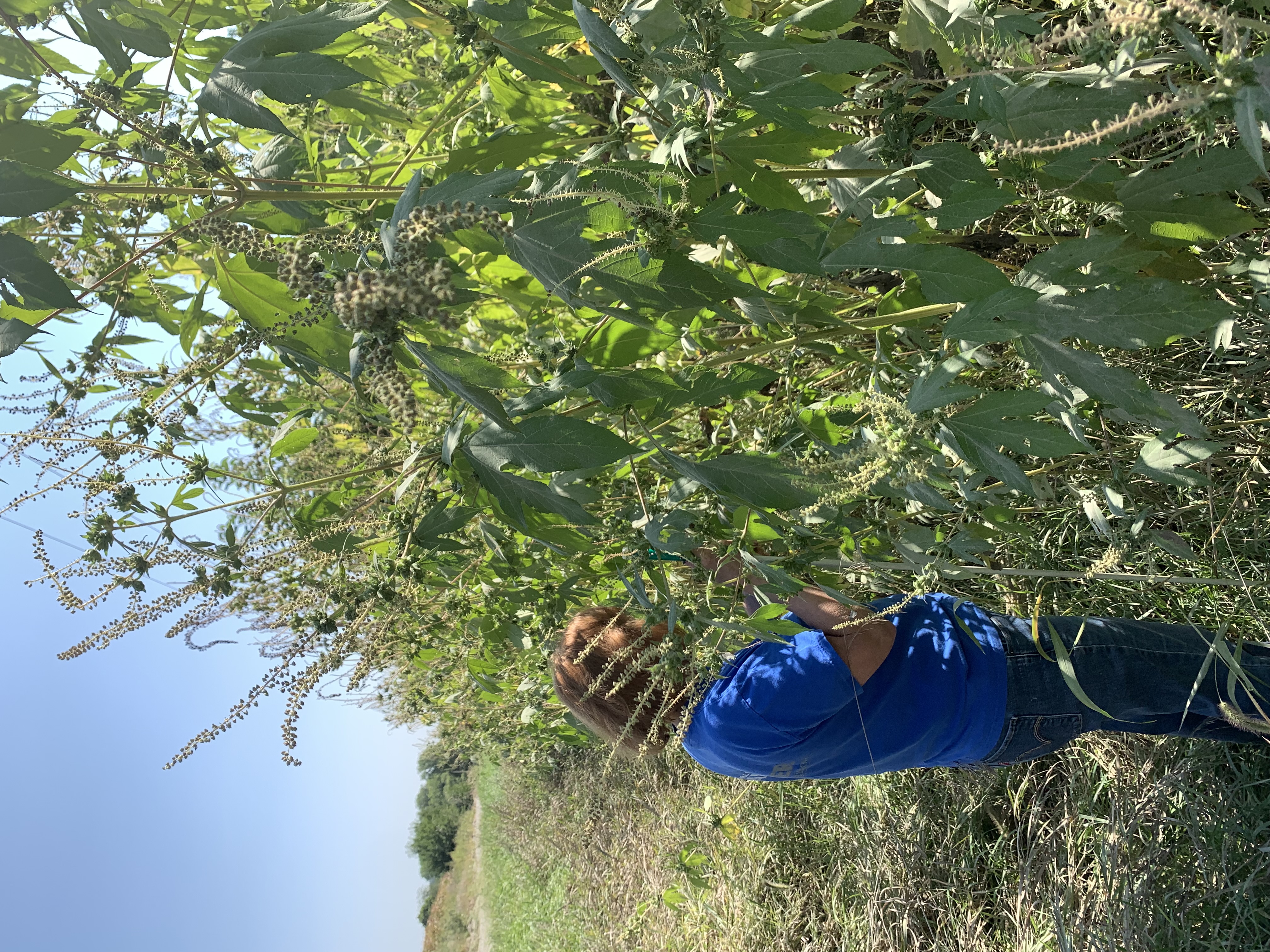When I was growing up, we took our vacations in August. And we usually went north. Minnesota, Wisconsin, Canada, Michigan. Dad would load up the car top carriers with tents, sleeping bags and camping gear. Then he’d load up Mom and all seven of us kids into the station wagon and off we’d go. The timing was deliberate. It had nothing to do with the impending start of school for us kids. It had to do with the bane of Dad’s existence as a farmer—hay fever. And the culprit—ragweed. It was in full flower in August, and the yellow pollen was thick in the air and on everything. Our vacations gave him a brief respite from the misery of severe allergies.
We have two distinct types of ragweed on Owl Acres–common ragweed (Ambrosia artemisiifolia) and giant ragweed (Ambrosia trifida). Now who would name the genus for ragweeds Ambrosia? Certainly not my dad!
Common ragweed which is also known as bitterweed, Roman wormwood, hogweed, and annual ragweed, grows to about three feet tall. Its multiple hairy stems support long, raggedy leaves. Each stem terminates in a spike of flowers that broadcasts their pollen in massive quantities on the wind. Each of these little green flowers turns yellowish-green or brown as it develops into a seed inside a dry husk. These spikes of seeds remain on the plant through the winter.

Common ragweed on this side of the road, giant ragweed (feature photo) on the other side. Author photo.
Common ragweed is an annual plant but it develops a taproot and a tough, fibrous root system. It can grow just about anywhere regardless of soil type or even drought conditions. It’s native to North America and has thrived prolifically in fields, roadsides, gardens and other places where the soil has been disturbed. The seeds remain viable in the soil for years, waiting for the right conditions to germinate. They will crowd out other species and take over especially in drought conditions. Part of their strategy is to release chemicals into the soil around themselves that inhibit germination or growth of other plants, keeping the way clear for their own sturdy, fibrous root systems.
Giant ragweed, AKA horseweed or buffaloweed, also grows in the ditch along the road at Owl Acres. It grows up to 10 feet tall, and has scratchy leaves about the size of my hand. The leaves have three or five deeply defined lobes. It doesn’t look anything like common ragweed, but its pollen is just as big a problem.
As for the ambrosia question? It’s not the nectar or the pollen. A few non-native honeybees may try out the flowers, but the natives know that ragweed is wind-pollinated and doesn’t bother with tasty nectar. However, the leaves are delicious if you’re the larva of a long list of native species. There’s even a ragweed plume moth whose larvae specialize in chomping ragweed leaves down to skeletons. Grasshoppers love it, too. Elk and goats will eat the foliage as well, but its bitterness is off-putting to other mammals. The seeds are rich in oil, and birds including quail, juncos, sparrows, goldfinches and white-throated sparrows eat them. So do 13-line ground squirrels and voles. The seed spikes stick up above the snow during the winter, so they’re available to feed the hungry.
A nice tasty meal of oil-rich seeds would probably qualify as ambrosia during a hard winter.
Photo by Author. Alt text: Karen is dwarfed by a forest of giant ragweed, towering overhead in the ditch across from Owl Acres.

2 comments